Ford’s $300,000, 800+ hp Mustang GTD is putting all supercars “on notice”
Ford debuted an all new-Mustang tonight at the Pebble Beach Concours in California, one unlike any before it.
Here’s the first paragraph of the press release for the 2025 Mustang GTD, heavy on the drama:
“Deep inside a metal storage garage hidden behind a wind tunnel building in Allen Park, Michigan, a handful of team members gathered in 2021 for a new, after-hours mission that on paper felt like an impossible dream: Design a Mustang to take on the best of European sports cars. The result is a limited-edition, ultra high-performance street-legal performance car with the soul of a Mustang. Debuting today is the all-new 2025 Ford Mustang GTD, a technological tour de force inspired by the Mustang GT3 slated to race in Le Mans next year.”
OK, here are the answers to the questions you have. The GTD name refers to the IMSA “GTD” racing class for cars that are built to FIA GT3 regulations. And, unlike a source reported this morning that we also referenced, the Mustang GTD is not mid-engined. It will cost about $300,000, before options, and be available late in 2024 or early 2025.

The Mustang GTD is a full-fledged supercar, Ford insists.
“This is our company. We’re throwing down the gauntlet and saying, ‘Come and get it.’ We’re comfortable putting everybody else on notice. I’ll take track time in a Mustang GTD against any other auto boss in their best road car,” says part-time amateur racer and full-time Ford President and CEO, Jim Farley.
The fenders, hood, the cover that replaces the trunk lid, the door sills, front splitter, rear diffuser and roof are all made from carbon fiber with optional carbon fiber front and rear fascias. An available aero package that includes a comprehensive underbody aerodynamic tray is also done in carbon fiber and includes features pioneered in motorsports, as well as some technology that would be illegal in racing, such as hydraulically controlled front flaps to manage airflow for aerodynamic balance in coordination with the hydraulic active rear wing.
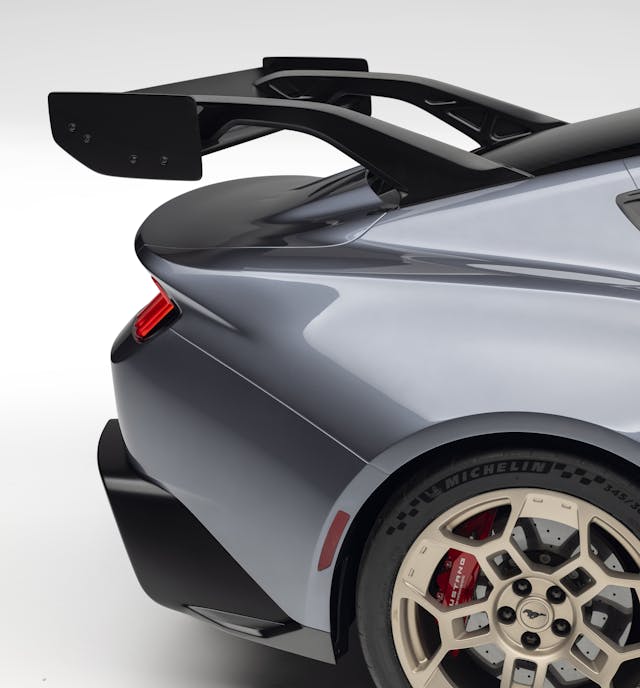
The car will begin life at the Flat Rock, Michigan factory and be sent to Multimatic in Canada for finishing. Multimatic, of course, built the Ford GT and handles much of Ford’s sports car racing.
Where there once was a trunk is now the semi-active suspension, a hydraulic control system, and a transaxle cooling system.. A cover replaces the trunk lid and includes two air scoops to funnel air off the back glass into the area and through the heat exchangers.
Farley continues: “Mustang GTD shatters every preconceived notion of a supercar. This is a new approach for us. We didn’t engineer a road car for the track, we created a race car for the road. Mustang GTD takes racing technology from our Mustang GT3 race car, wraps it in a carbon fiber Mustang body and unleashes it for the street.”
“We obsessed about the racing technology under its skin. What makes it go is even more compelling than what you can see when it passes you by. When you look at the engineering, the aerodynamics, how the powertrain works, the Mustang GTD is a rocket ship for the road,” says Mark Rushbrook, global director of Ford Performance Motorsports.
“The hardware has been carefully selected and developed to enable blistering lap time performance. The target for this project was clear – go much, much faster than we’ve ever gone before with a targeted sub-7-minute Nürburgring time. This makes it the fastest roadgoing Mustang ever from Ford,” says Greg Goodall, Ford chief program engineer.
The Mustang GTD uses a purpose-built and supercharged 5.2-liter V-8 with dual air inlets. With its 800+ hp (Ford has yet to nail down an exact figure) it’s the highest-horsepower street-legal Mustang ever. It also features the first dry-sump engine oil system fitted to a roadgoing Mustang, helping keep the engine lubricated during sustained and demanding cornering. The engine’s more than 7500 rpm redline “generates exceptional notes through the available titanium active valve exhaust system.”
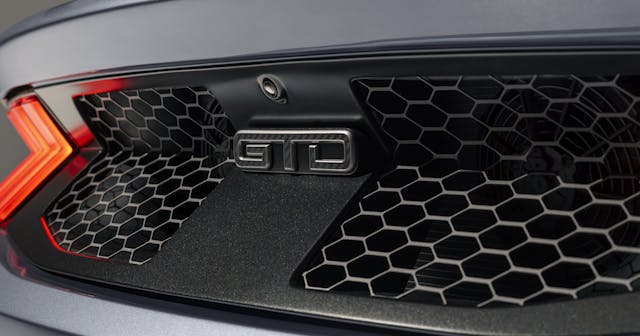
Road grip and cornering stability for the Mustang GTD come from 325 millimeter front tires—as wide as the rear tires of the Ford GT—while the rear are 345 millimeters, and mounted on 20-inch forged aluminum wheels or available forged magnesium wheels. Brakes are Brembo carbon-ceramics.
Power is sent from the engine to the rear wheels through a carbon-fiber driveshaft connected to an eight-speed rear transaxle for near 50:50 weight distribution between the front and rear. Lap time drive simulations and powertrain dyno testing led to the selection of the powertrain and transaxle architecture to put power to the ground.
The cockpit features premium materials including Miko suede paired with leather and carbon fiber, while digital displays aim to keep drivers engaged and in full command. Recaro seats optimized for track work are complemented by available 3D-printed titanium paddle shifters, rotary dial shifter, and serial plate, all made from retired Lockheed Martin F-22 titanium parts. The rear seating area has been removed to reduce weight and provide cargo space.

The 2025 Ford Mustang GTD can also be ordered in any color, or even color-matched to a customer-provided sample. These customizable options allow buyers to personalize their example should they choose to make it entirely unique.
Farley gets the last word: “Mustang GTD represents the very best of Ford Motor Company and what our team needs to do every day. This is what happens when we take what we’re good at and push the boundaries to see where the bubble stops. It represents the essence of the transformation we’re going through at Ford, from software to special edition cars.”
***
Check out the Hagerty Media homepage so you don’t miss a single story, or better yet, bookmark it. To get our best stories delivered right to your inbox, subscribe to our newsletters.



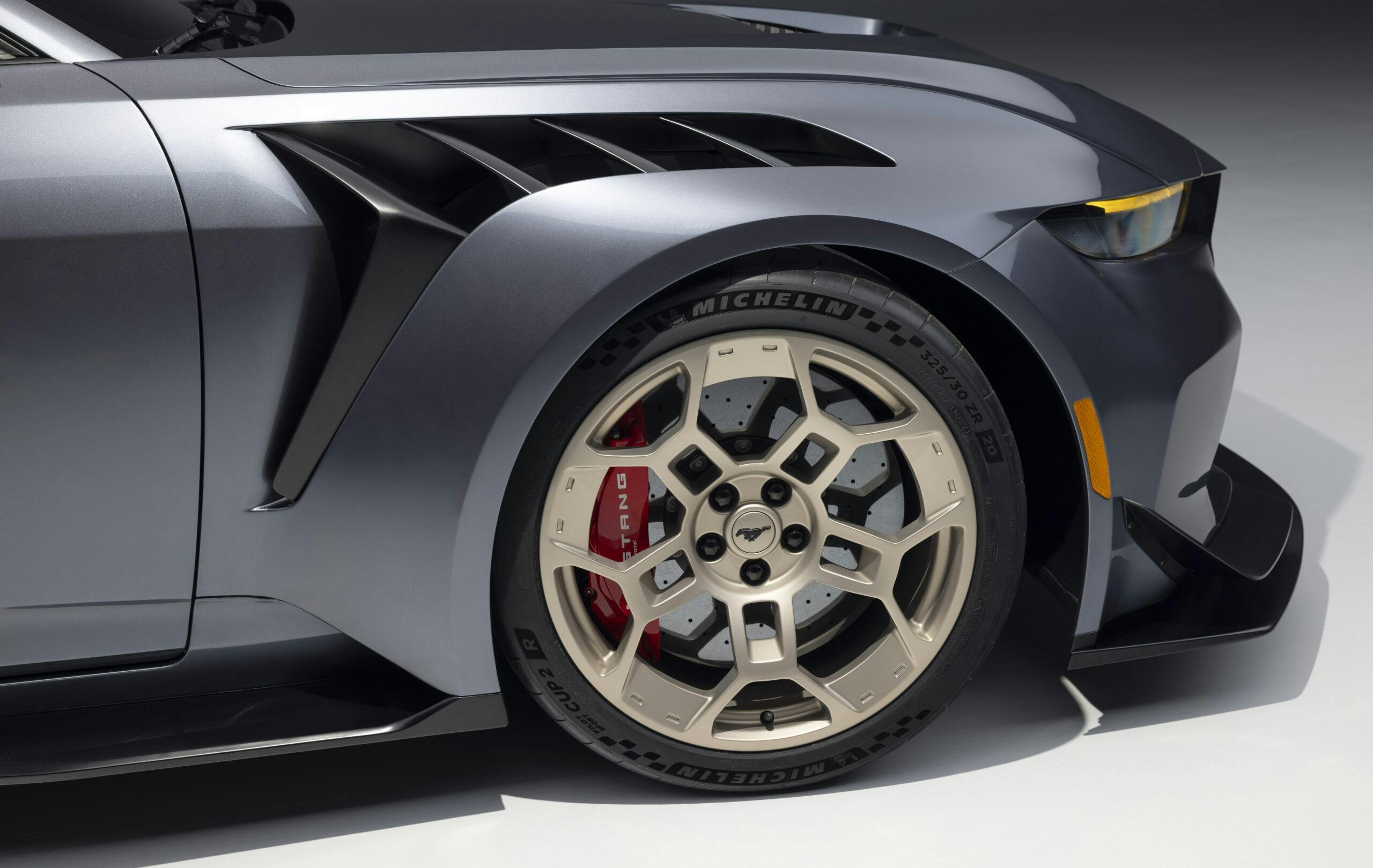
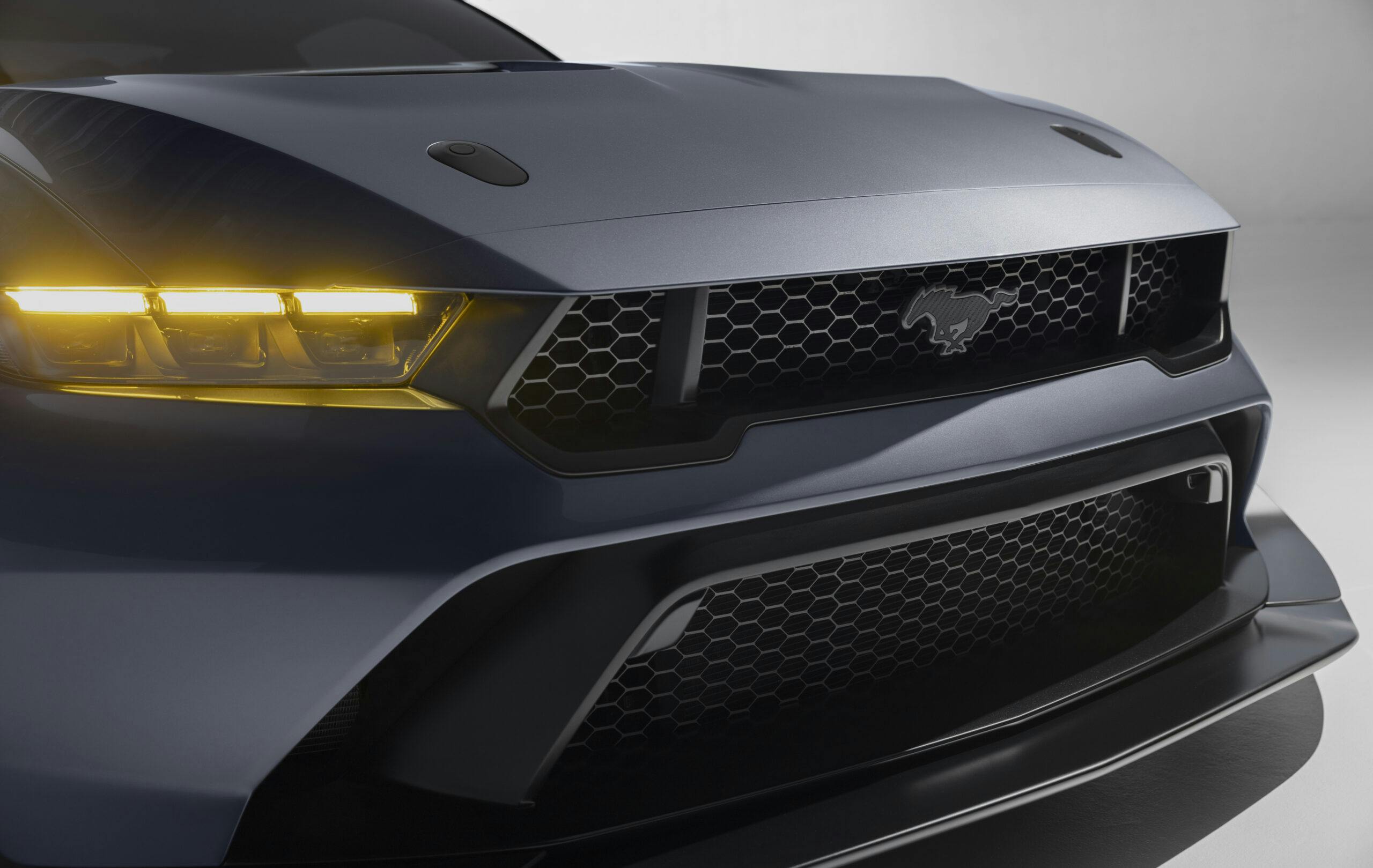




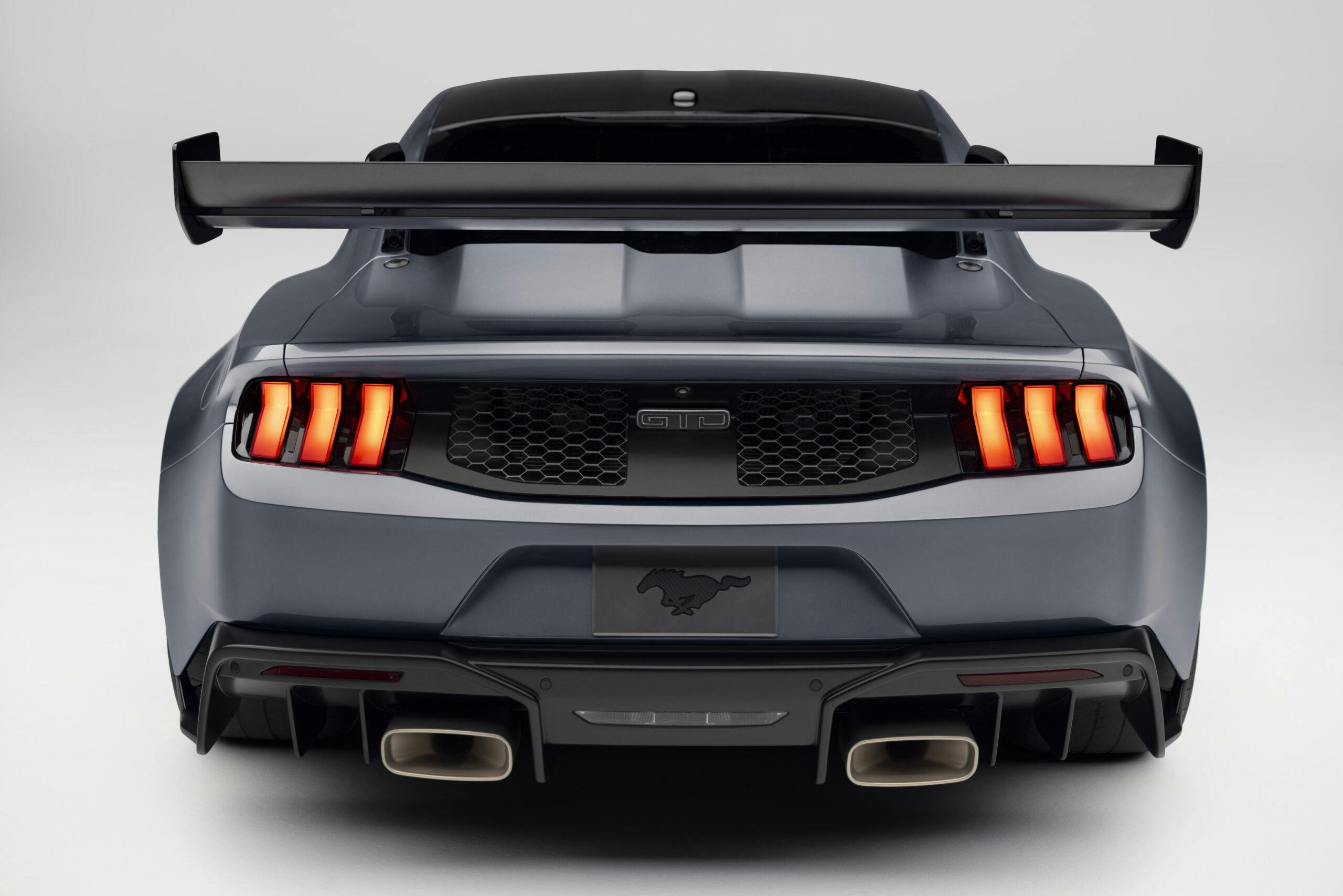
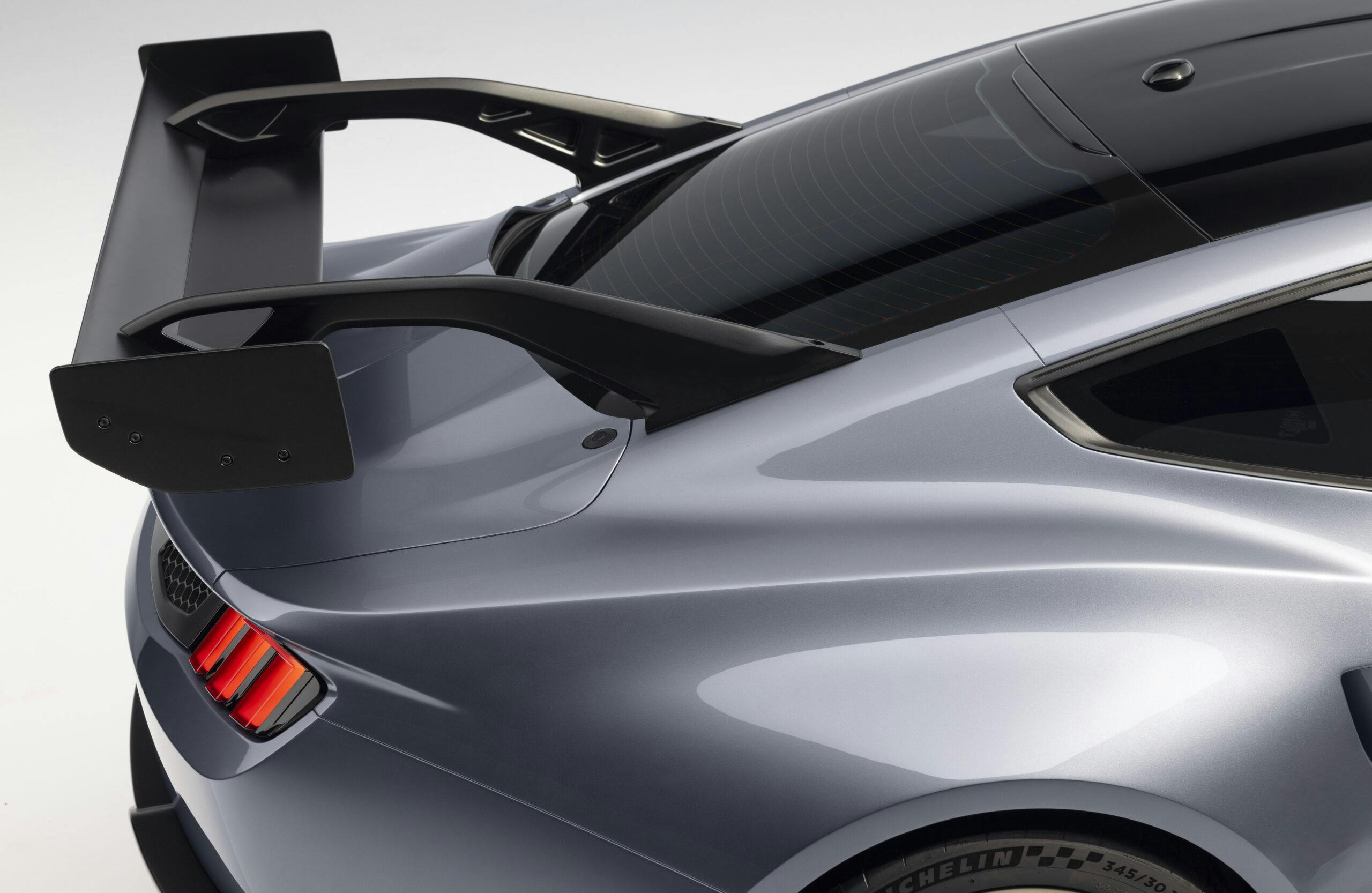



The GTD is another expensive Nurburgring fast-lapper that will make a brutal and annoying daily driver. EVERY car that produces fast Nurburgring laps has been a damn annoying daily driver. But they make pretty good race cars for people who have the means to pay for a team/car/travel/development, either personally or through sponsorships. This car is a halo car for Ford. It will get them press and some will race them, perhaps with some success. But mostly, in 5 years, you will see GTDs crossing the auction block at prices higher than MSRP with under 2000 miles on the odometer.
Someone tell me how you 3-D print Titanium paddle shifters? LOL …
You aren’t familiar with additive manufacturing? This is nothing new: https://cosmosmagazine.com/technology/titanium-alloy-3d-print/#:~:text=Titanium%20powder%2C%20with%20micrometre%2Dsized,strongest%20known%203D%2Dprinted%20metal.
Monkey see monkey do with the ford
Would rather have a C8 Z06 for a little more than half the price, would take the rest of it and buy a Terminator Cobra to go with my Lightning. On top of that, it’s ugly.
How does one 3-D print Titanium paddle shifters? LOL…sounds like the marketing department needs a f’n engineer on staff
Additive manufacturing with metal (including titanium) is not only possible, but hardly new technology. An engineer would back up the marketing statement here.
Wow….didn’t realize this article was published in “Knitting Today”; I (mistakenly) thought I was on an auto enthusiasts site.
But seriously, I can’t believe the comments crucifying Ford for creating a halo model for an enthusiast car they have been committed to for 60 years while their competitors’ pony cars have come and gone depending on the whims of the market.
So what if you can’t afford it? Just the fact that it exists should be celebrated.
Can we all just agree it’s a bad#%% car?